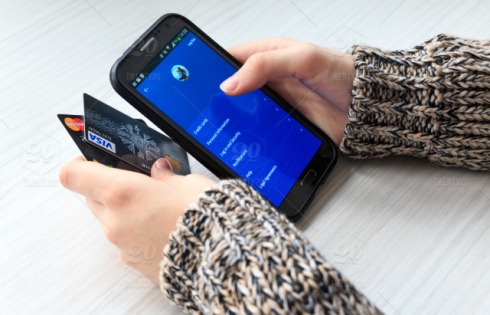PayPal, Venmo, Square Cash, WePay, SnapCash, Facebook Messenger – these mobile payment apps have made our lives so easier, isn’t it so? We neither have to stand in long queues outside the ATM nor have to keep forking for cash or checks. With just a single tap on the mobile screen, we are able to send/receive money from any part of the world.
But, have you ever wondered how these mobile payment apps work? What are the different types of mobile payment systems available? If not, then this blog is apt for you to read before investing in mobile payment app development.
P2P Mobile Payment Apps
Peer-to-Peer (P2P) payment mobile applications are a kind of payment services that enable users to transfer funds from one account to another. The application acts as a middleman in the transaction process and is one of the pillars behind the successful establishment of Digital market.

Types of P2P Payment Applications
When talking about P2P mobile payment apps, there are basically three types of apps you can develop, namely:
- Standalone Apps: These apps do not rely on the bank for money transfer. Rather, they have their own payment mechanism to provide the sending/receiving payment service, eventually resulting in instant fund transfer service. In this category of applications, there’s a feature of wallet (a virtual wallet) where the users can pick money from their bank accounts and store for further use. The best example of this type of P2P payment system is PayPal.
- Bank-centric Apps: As depicted by name, these type of mobile applications rely on banks and credit union for money transfer. They collect money from the bank account at the time of a transaction. They do not keep it in their virtual wallet. Because of this, these payments apps are slower yet more secure. And in fact, in most of the cases, these applications are affiliated by the banks itself to bring banking services at the door of the customers anytime. The overwhelming examples are ClearXchange and PopMoney.
- Social Media-based Apps: This kind of mobile apps uses Social media platforms for making transactions. In this payment procedure, the user has to transfer money using his debit/credit card without leaving the messenger window. The payment gateway integrated into the social media platform is employed and the money is transferred, although somewhat more time is being consumed.
Factors to Consider Before Developing a P2P System
As you might have decided what type of mobile payment application you want to build, let’s move onto the factors to keep into consideration while developing a P2P payment system:
- Funding Sources and Fees
The first thing to consider in P2P mobile app development is to plan the kind of funding sources and fees structure you want to opt. For example, if you are allowing payment by credit/debit card, what percentage of the amount will be charged as a transaction fee? Will it be fixed or variant?
- Convenience
Secondly, discuss the convenience of the users. Will they be allowed to send payment to non-app users or not? How many transactions can users make with your peer-to-peer mobile payment apps and for what amount? What would be the time required for making a transaction? Will your app provide several additional features such as bill splitting or not?
- Security
Security is yet another crucial factor to consider while developing a P2P payment system. Make sure that your mobile application is PCI compliant and SSL secured. Plus, it has security identification system like a passcode or biometric protection to authenticate transfer. And yes, don’t forget about the Blockchain technology. With its features of public secure ledger system, the technology is setting a new era of mobile payments. This implies implementing Blockchain technology into your mobile payment apps will be an advantage for your business over those who are still not looking forward to it.
Now, as you have a comprehensive knowledge of types of applications, its working process and factors to bear in mind, hire the best mobile app development agency and bring a profitable P2P mobile payment application into the market. Good Luck!

